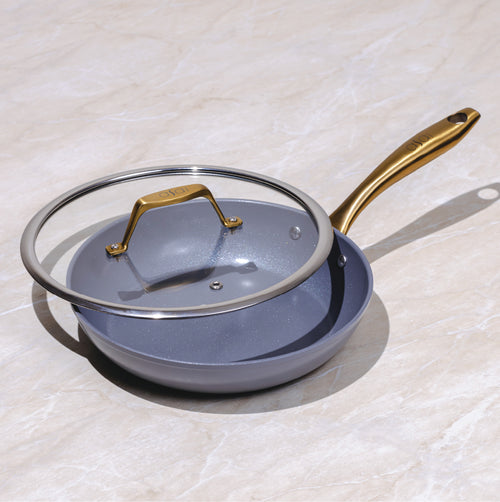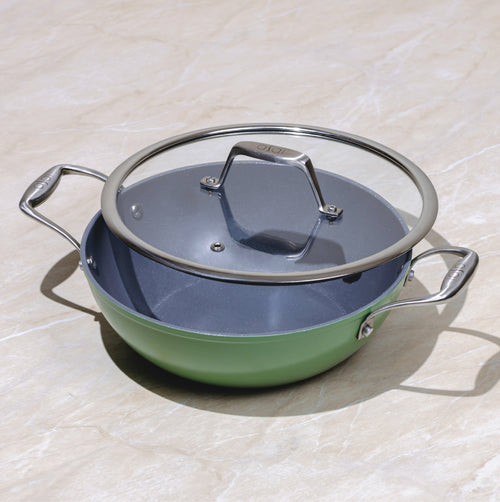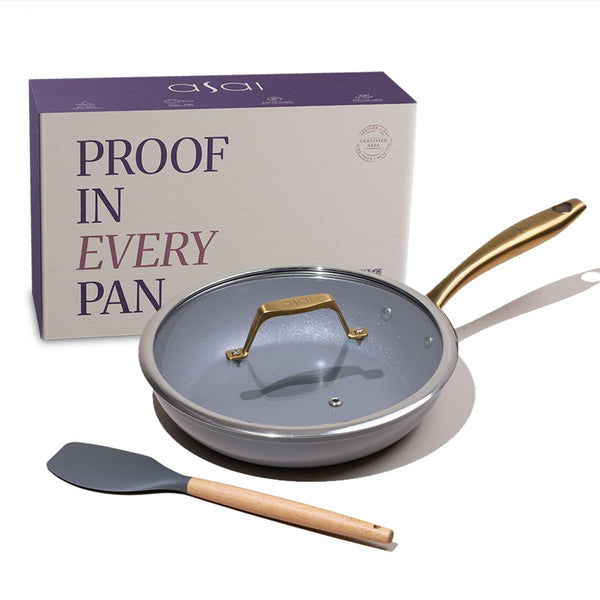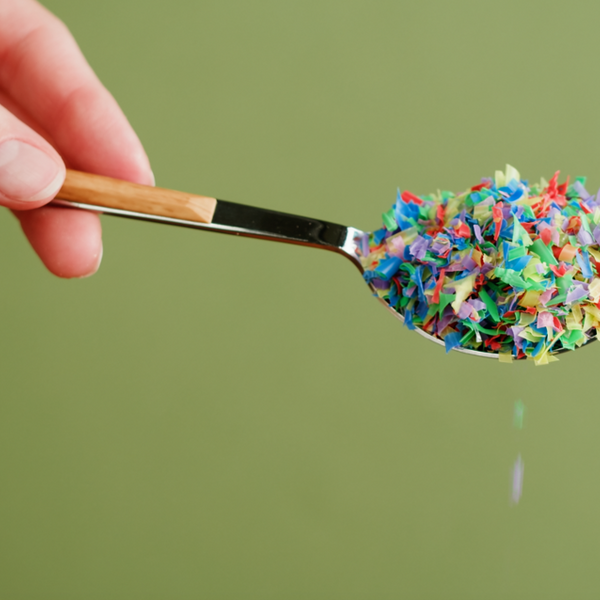What’s Really Going On With Scratched Nonstick Pans?
How Many Microplastics Are Getting Into Your Food—And Why?
What the Latest Science Says About Cookware and Microplastics
Let’s not sugarcoat it:
- One little scratch = up to 9,000 microplastic particles.
- Badly worn-out pan? 2 million-plus microplastics—just from making breakfast.
- Studies using “jelly food simulants” showed old pans dumped thousands to millions of particles, especially if you stir and heat.
Why? Well, it’s the material—the “nonstick” stuff is called PTFE, or Teflon. When it flakes or scratches, parts of it literally end up in your dinner. If you raise the heat or cook with acidic food like lemon or tomato, it just releases more. Scary, right?
How Everyday Cooking Habits Make Things Worse
Here’s where most of us go wrong:
- Using metal spatulas (I know, they’re tempting)
- Blasting the pan on high heat because you’re in a rush
- Tossing it in the dishwasher, hoping for an easy clean
Each “oops” moment wears down that coating a little more. Over months or years, those dings and scratches add up, and suddenly, you’re ingesting bits of your pan every time you eat eggs. The reality is, these innocent day-to-day habits speed up how many microplastics get into our meals.
Simple Ways to Keep Microplastics Out of Your Meals
Nobody wants a side of plastic with their stir fry. Here’s how to fight back:
- Inspect often: If your pan has scratches, weird bumps, or looks faded, swap it out.
- Go low & slow: Stick to medium or low heat; your pan (and future self) will thank you.
- Be gentle: Use silicone, wood, or plastic utensils (never metal, promise!).
- Hand wash: Give your pan a spa day—avoid dishwashers and scratchy sponges.
- Switch to safer cookware: Stuff like glass or stainless steel barely sheds any microplastics. You don’t have to ditch nonstick forever, but having an alternative helps.
“Is My Pan Safe?”—Common Myths and Mistakes People Make
Let’s bust some kitchen myths—you’ll probably recognize a few:
- “Just a tiny scratch—what’s the harm?” 9,000 microplastics, that’s what.
- “My new pan can handle anything.” Nope. All nonstick coatings eventually break down.
- “The plastic passes through, no biggie.” Actually, studies show microplastics can end up in your blood.
- “Only Teflon is risky.” Any scratched plastic cookware has the same problem.
What Top Chefs and Scientists Want You to Know
“Our results were concerning—showing that plastic cookware is likely adding thousands of microplastics into the human diet each year”
— Scientists at the North Atlantic Microplastic Centre
Ceramic pans are safer yet provide the same convenience of non-stick pans. At Asai, we use Procera™ ceramic—100% PFAS-free, heavy-metal free and free from 70+ hidden toxins. You can check our range of ceramic pans here.
 |
 |
Conclusion
Here’s the bottom line: Worn-out nonstick pans can leach up to 2.3 million microplastics per use. That’s not a headline to panic over, but it’s a nudge to cook a little smarter. Inspect your pans, switch up your utensils, and—when you can—try safer cookware. The science is clear, and now the kitchen secrets are yours. Your family’s next meal will thank you.
FAQs
A: If your pan has scratches, flakes, or faded spots, it could be shedding microplastics into your food—especially with frequent use or high heat.
A: Most nonstick pans, especially older or badly scratched ones, can release millions of microplastic particles. It’s smart to replace them at the first signs of damage.
A: Stainless steel and glass cookware hardly leach microplastics, making them solid choices if you want to lower your exposure for good.
Sources:-
- Non-stick pans could be releasing millions of tiny plastic particles into your food, study finds – fox9.com
- New study shows a single scratch on a nonstick pan releases 9000 toxic micro plastic particles... – princeea.com
- Are nonstick pans toxic? – medicalnewstoday.com
- New study shows plastic and non-stick cookware is... – pml.ac.uk














